Niching is a frequent dilemma for so many business owners. How do you choose a niche? How deep should you go? What if your niche doesn’t work? How do I start saying “no” to clients outside my niche? All of these questions seem to regularly hit my inbox. Niching is so important to the success of your business that I dedicated three lessons to niching in the “Selling Creative Services” course in my freelance course suite.
A couple years ago I began to understand “niching” in a way that I wish I would have grasped while I was building my agency. If only I would have realized this concept sooner! But all is not lost, because I get it now and it has impacted my “post agency” business ventures in a very positive way. I think of niching as a “funnel.” In fact, I call it “The Niche Funnel” and here is how it works.
The Niche Funnel
On the top of the funnel is a “broad niche” and on the bottom of the funnel is a “narrow niche.” The broader your niche is, the harder it is to market your product or service. The narrower your niche is, the easier it is to market. Simple, right? Let’s dig deeper.
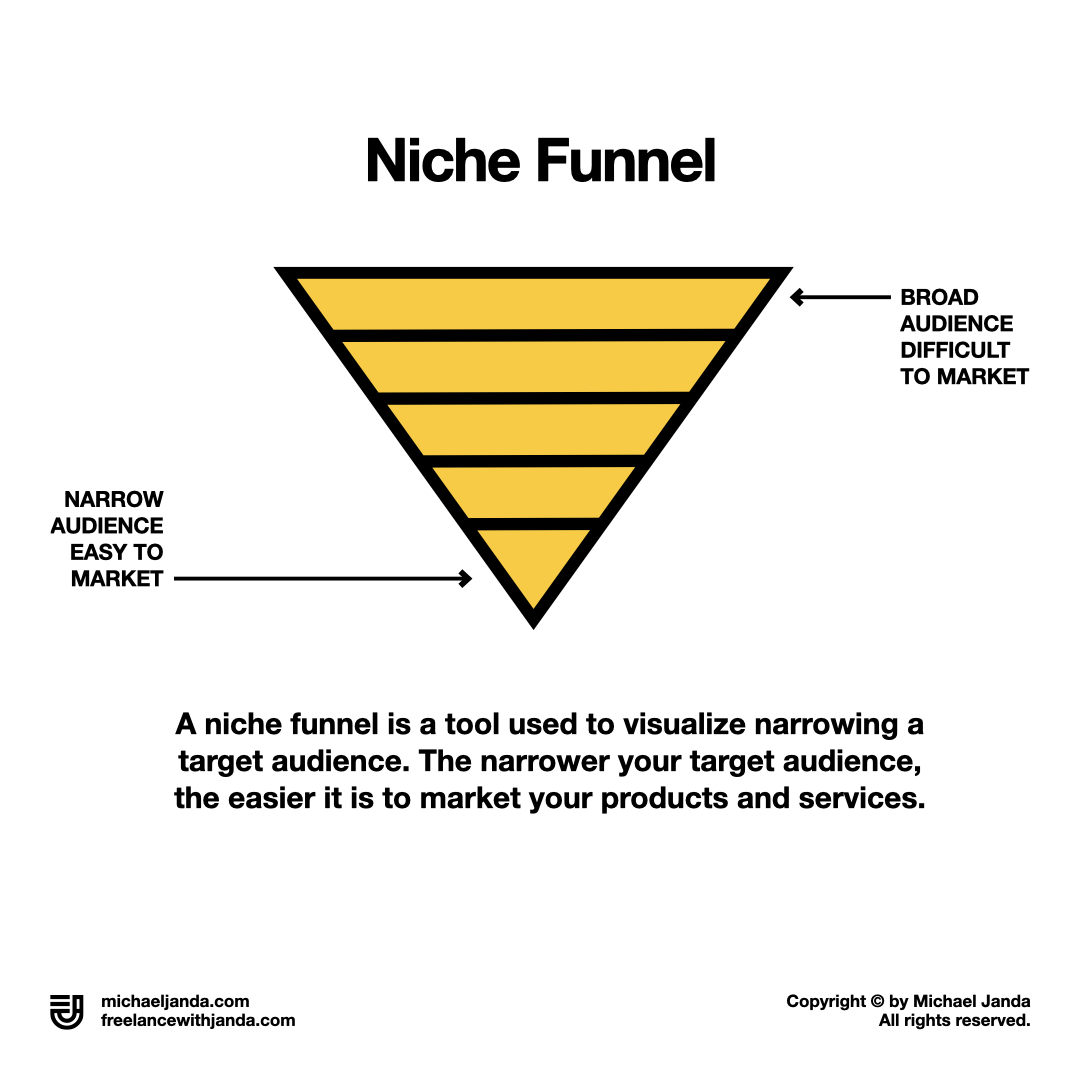
Your business can niche in a variety of different ways:
Service: You may choose to niche based on a specific set of services you offer; only logos, only websites, only packaging, only photography etc. This is probably the most common way people think of niching and it can be affective, but it is still quite broad.
Industry: Choosing to only work with a certain type of industry is also a popular way to niche. For example, my agency started by niching for the entertainment industry. My first clients were Sony, ABC Family, and Warner Bros. (a fortunate start). As we grew inside that niche we began landing other entertainment industry clients including TV Guide, National Geographic Channel, and NBC. You might choose to niche with a specific industry: Tech? Restaurants? Health care? Athletics? Auto? There are really countless industries to choose from.
Location: Many businesses niche in location. This entails choosing to only work with clients in a single city, region or country.
Budget: Niching based on client budget is also effective. This means that you choose to only work with clients that have a minimum investment of $XXXX. For example, you may say to yourself, “I will target clients with a minimum project size of $1,000 and a maximum of $10,000. I’ll leave the $50 logos for other people and the $100,000 websites can be for bigger agencies. I’ll just stay in my sweet spot between $1,000 and $10,000.
Size: The final way you may consider niching is based on business size. There are a variety of business sizes you could target including bootstrap small businesses, funded startups, Fortune 5000 or 500 or 100. Each of these types of business require a different marketing approach.
Now that we understand the variety of different ways you can niche, let’s plug them into our funnel by defining criteria for each category.
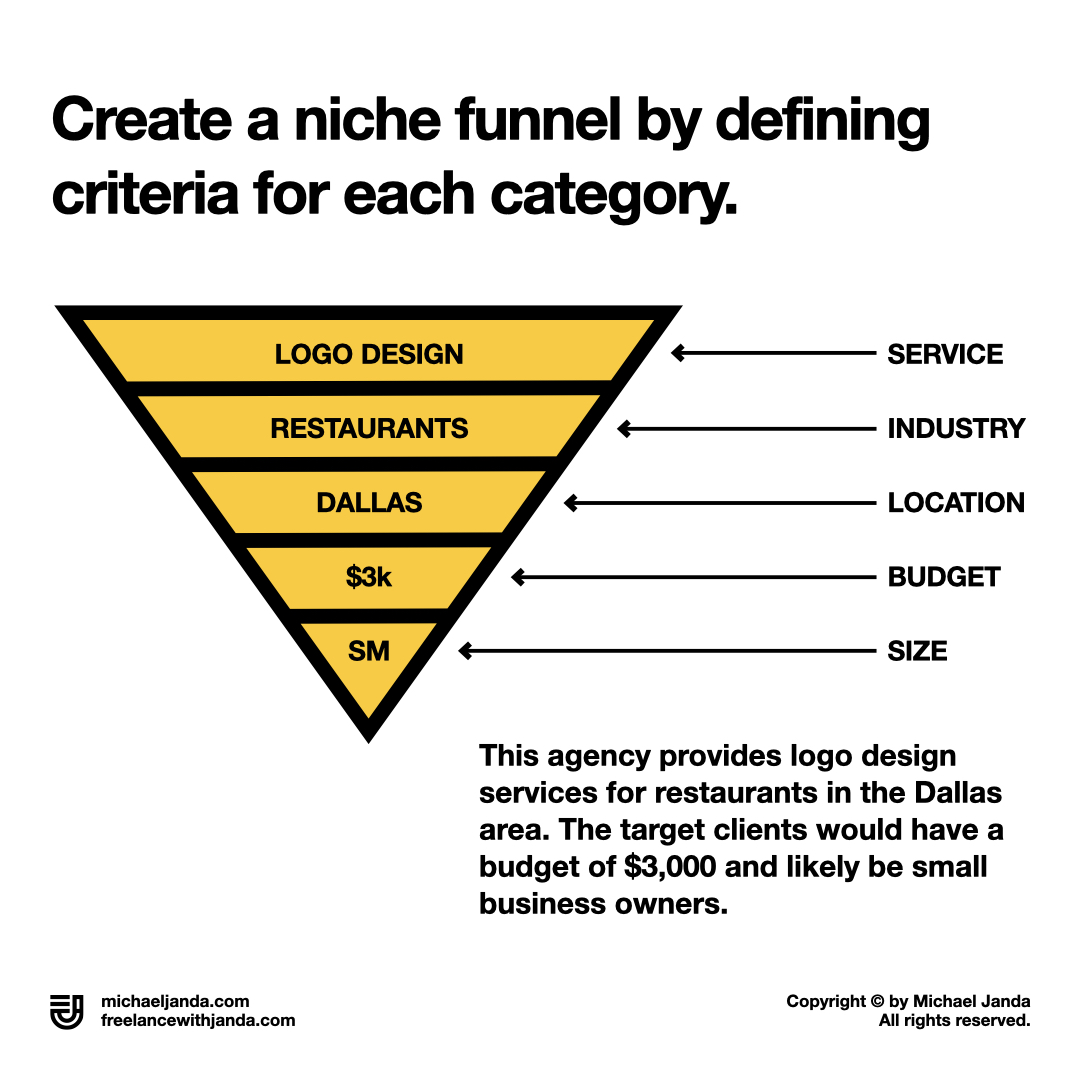
You can see that on the top the funnel above, we are considering a niche of logo design (service) for restaurants (industry) in Dallas, Texas, USA (location) with a willingness to spend $3,000 (budget) as a small business (size).
As you work down potential niches for your business, keep in mind that the criteria doesn’t have to be in the same order each time. The business shown below provides website design and development for U.S. based, mid-sized, tech companies with a budget of $20-30k. In this example service is on top and location is on bottom.
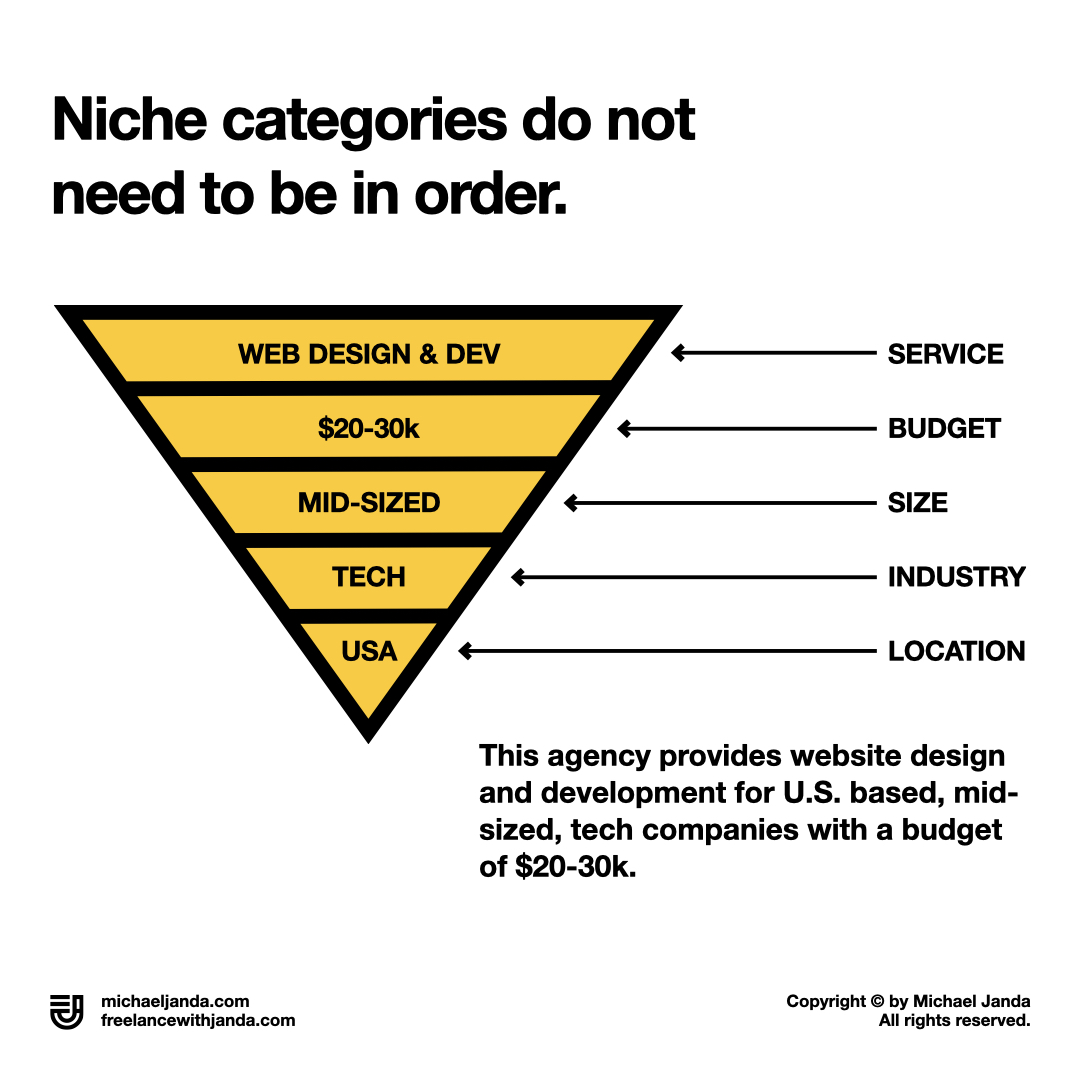 Next comes the important consideration. How narrow should you niche down the funnel? In the example below you may niche as a website design and development business for businesses with a $20,000 – $30,000 budget. Is this deep enough to make marketing easy? Are you capable of providing that service? Do you have access to those types of clients? All of these questions should be part of your niching consideration. And remember, you don’t need to niche in every category.
Next comes the important consideration. How narrow should you niche down the funnel? In the example below you may niche as a website design and development business for businesses with a $20,000 – $30,000 budget. Is this deep enough to make marketing easy? Are you capable of providing that service? Do you have access to those types of clients? All of these questions should be part of your niching consideration. And remember, you don’t need to niche in every category.
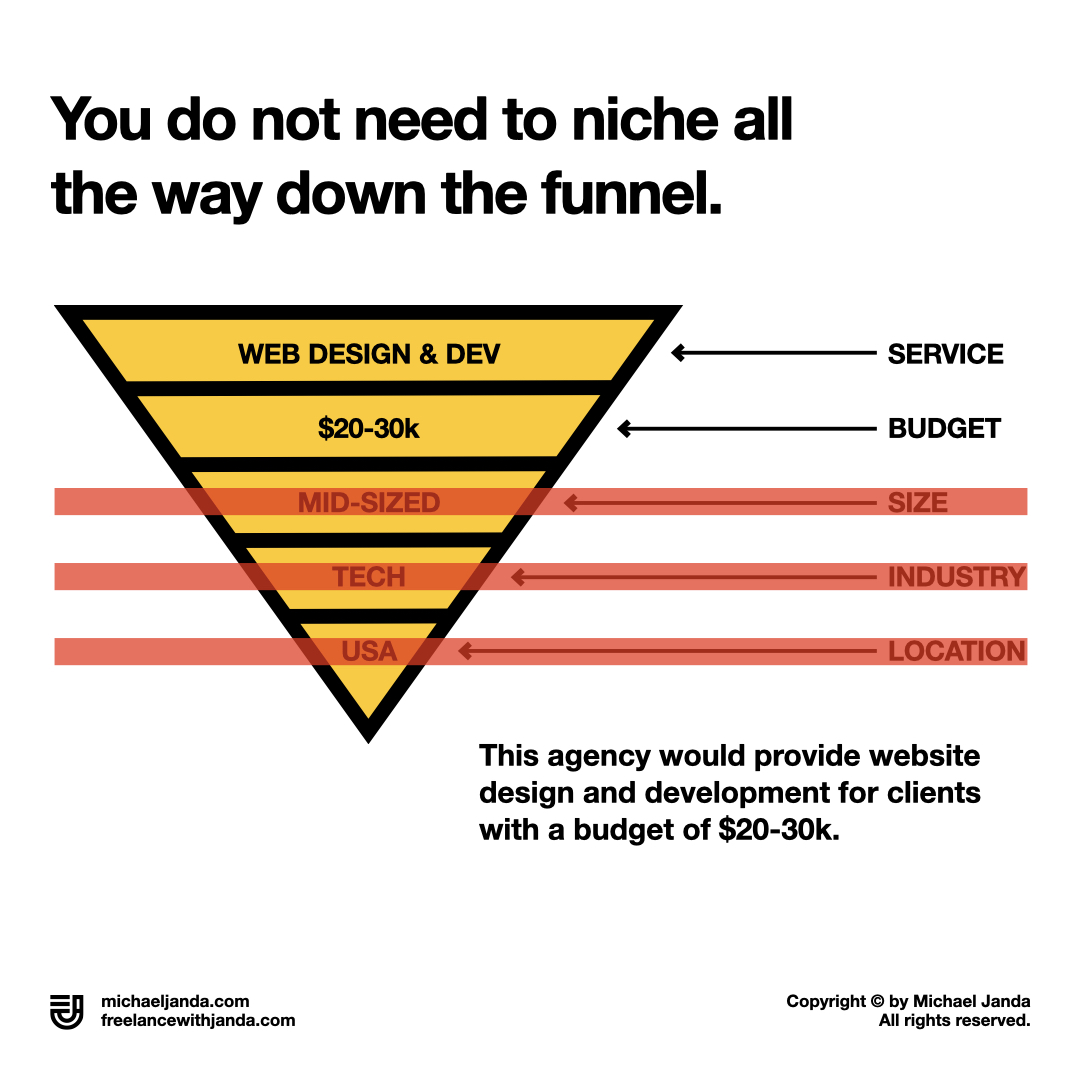 Be careful how deep you niche! Niching too deep can reduce your potential client pool to a point where it cannot sustain a business. For example, the agency below provides Fortune 500 skateboard companies based in India with a budget of $50k+. Hmmm… good luck with that business.
Be careful how deep you niche! Niching too deep can reduce your potential client pool to a point where it cannot sustain a business. For example, the agency below provides Fortune 500 skateboard companies based in India with a budget of $50k+. Hmmm… good luck with that business.
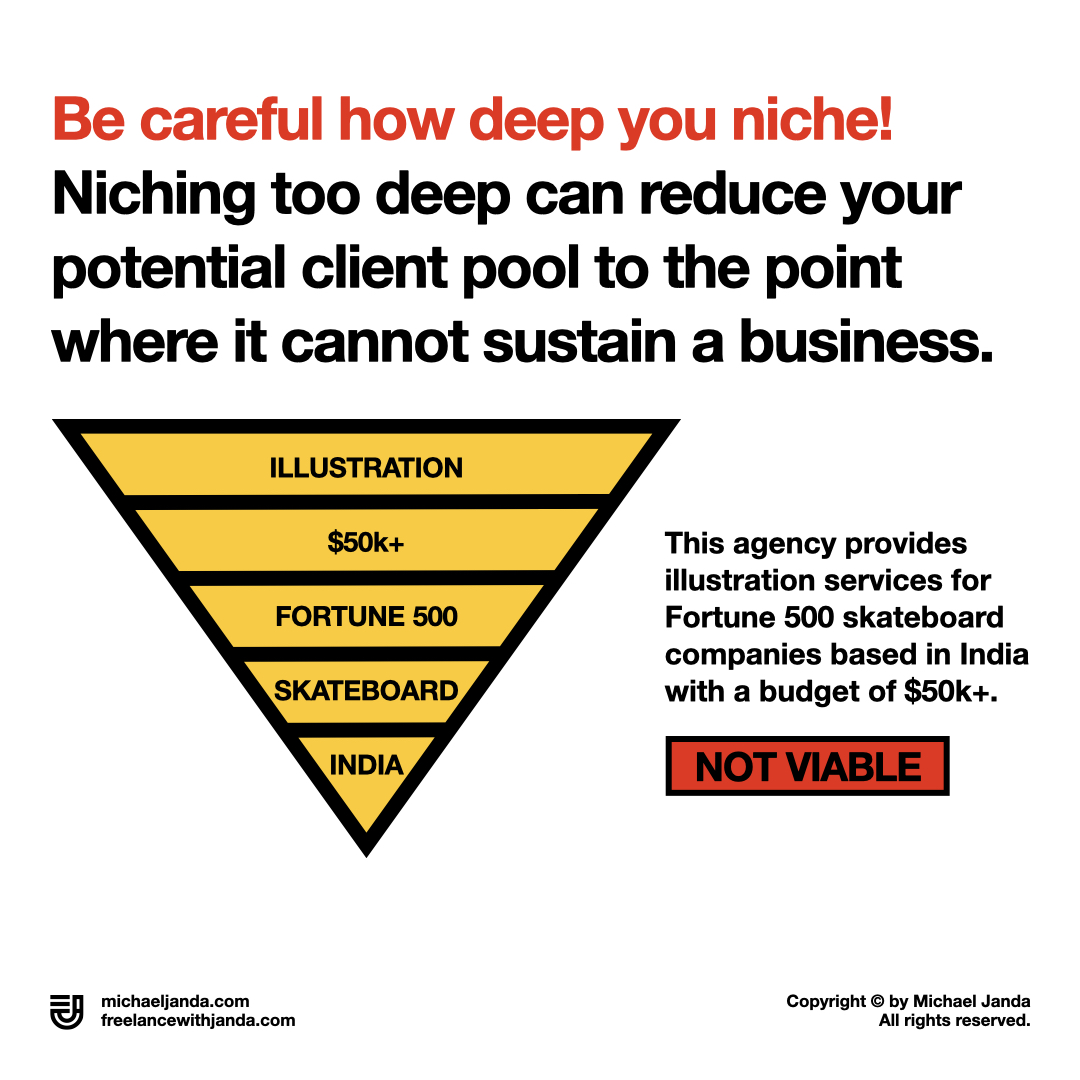 Multiple Niches and Niche Experiments
Multiple Niches and Niche Experiments
At this point you are probably still wondering, “Well how do a I choose? How do I know if my niche is going to work? Why is this so scary?” Good questions. Niching takes time. I didn’t understand the niche my agency was filling until several years into building my agency! I had 10 or so employees and $1,000,000+ in annual revenue and I finally began to understand my niche! It takes time. Be patient. And don’t be afraid to experiment!
I recommend experimenting with niches by using landing pages in your website marketing. The example below represents three different niches that are all a mildly overlapping, but have different target customers. The landing page of Niche 01 would speak to restaurant owners who need branding services and might include messaging like this, “We help restaurants rebrand their business to attract new customers.” Niche 03 might have messaging like this, “We help breweries grow through effective branding.” The Niche 03 landing page link could be sent to any potential brewery clients and the Niche 01 link would be sent to potential restaurant owner clients. This approach makes your marketing much more effective and empowers you to speak directly to the needs of the niche customer.
 As you experiment with niches, you may find that a specific niche begins to rise to the top. You provide great service to the niche. Your clients are happy. You’re making plenty of money in that one niche. When this happens, you may consider abandoning the other niches you are experimenting with and going “all in” on the one that is working best. But again, as I stated earlier, it all takes time, patience, and experimentation.
As you experiment with niches, you may find that a specific niche begins to rise to the top. You provide great service to the niche. Your clients are happy. You’re making plenty of money in that one niche. When this happens, you may consider abandoning the other niches you are experimenting with and going “all in” on the one that is working best. But again, as I stated earlier, it all takes time, patience, and experimentation.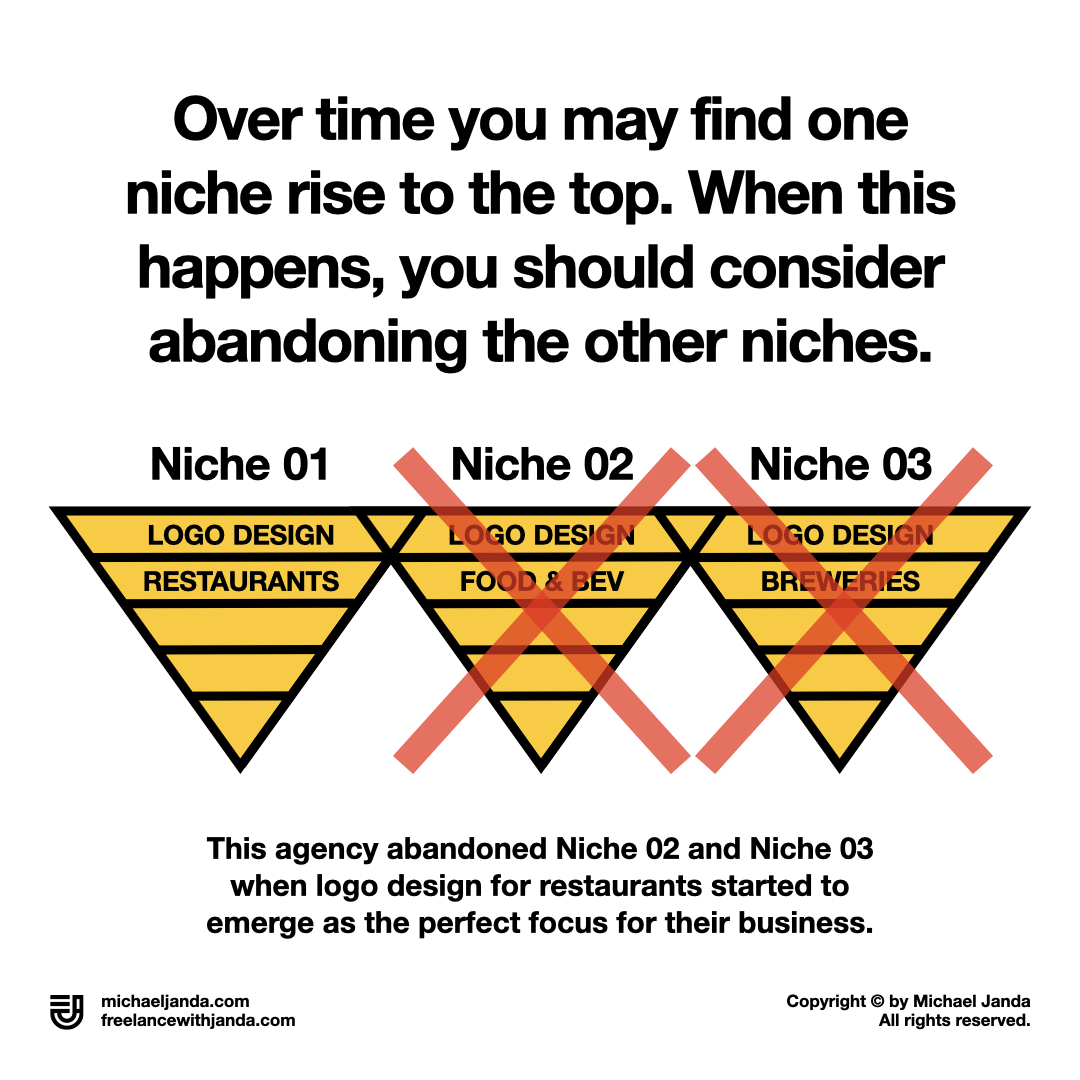 I hope this helps you look at niching a little differently than you might have in the past. Give your business time. You’ll get it sorted out. And, as they say, “There are riches in the niches.” Go find them.
I hope this helps you look at niching a little differently than you might have in the past. Give your business time. You’ll get it sorted out. And, as they say, “There are riches in the niches.” Go find them.











